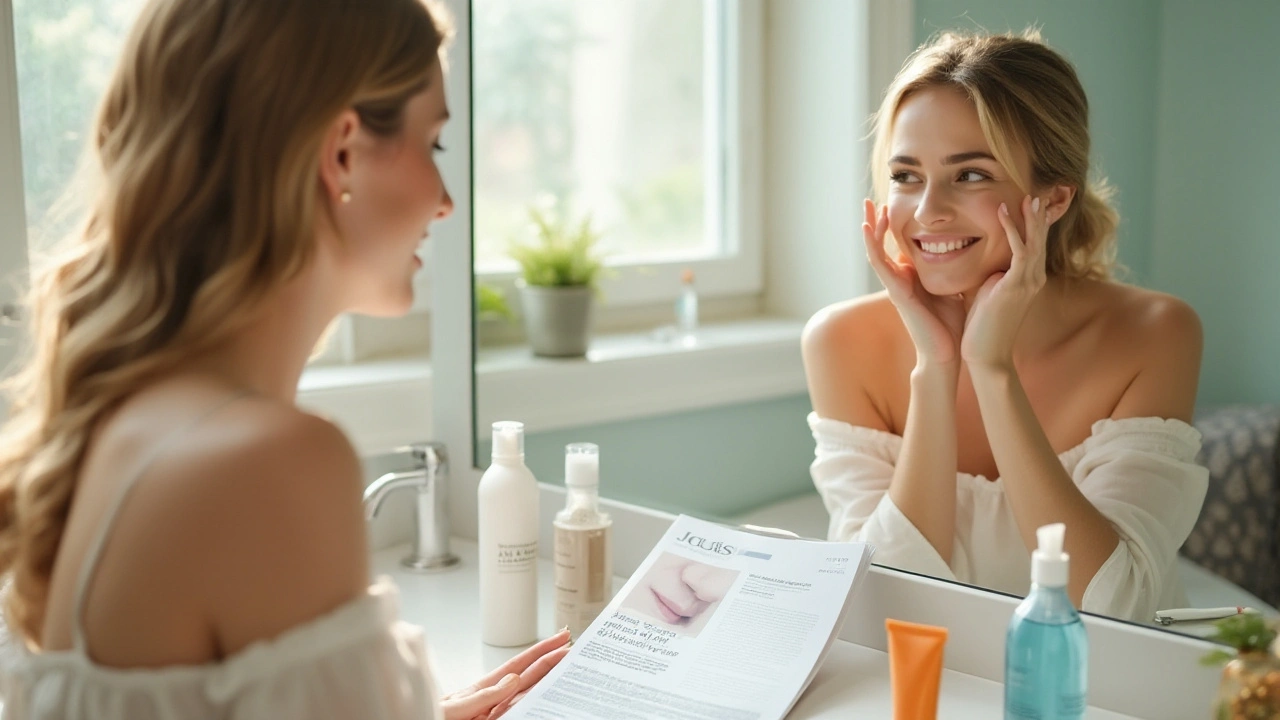Benzoyl Peroxide: How to Use It Safely for Acne
Benzoyl peroxide is one of the most common OTC treatments for acne. It kills bacteria that feed on oil and helps unplug pores. That makes it a good first-line option for whiteheads, blackheads, and inflammatory pimples. Here’s a clear, practical guide to picking the right strength, applying it without wrecking your skin, and avoiding common mistakes.
How to Use Benzoyl Peroxide
Start low and slow. Most stores sell 2.5%, 5%, and 10% formulas. 2.5% works for many people and causes less dryness and irritation. Clean your face with a mild cleanser, pat dry, then apply a pea-sized amount to the whole affected area—not just on single pimples. Use a thin layer once a day at first, preferably at night. If your skin tolerates it after a week, you can increase to twice daily.
Do a patch test before full use: apply a small dab behind your ear or on your inner arm for 48 hours. Watch for severe redness, swelling, or blistering. If that happens, stop and talk to a healthcare provider.
Expect results in 4–8 weeks. Acne won’t clear overnight. If you don’t see improvement after 12 weeks or skin gets worse, check with a dermatologist about other options.
Side Effects and Smart Tips
Common side effects are dryness, peeling, and mild redness. Prevent them by using a gentle, non-comedogenic moisturizer after the benzoyl peroxide dries. Avoid strong alcohol-based toners or harsh scrubs while using it—those add irritation without helping acne.
Benzoyl peroxide bleaches fabric and hair. Be careful with towels, pillowcases, and clothes. Use white towels and change pillowcases often.
Sun sensitivity can increase for some people. Use a daily sunscreen (broad-spectrum SPF 30+) and wear a hat if you’ll be in the sun. If you already use a prescription retinoid or other topical medication, check with your provider before combining—mixing can raise irritation. Many people apply benzoyl peroxide in the morning and a retinoid at night, or use them on alternating nights.
Pregnancy and breastfeeding: topical benzoyl peroxide has very low absorption through the skin, but you should still mention it to your provider. They can confirm safety based on your specific situation.
If your acne is widespread, painful, or leaving scars, benzoyl peroxide alone may not be enough. Ask a dermatologist about prescription options like topical antibiotics, retinoids, or oral medications. For fast or severe cases, a supervised plan is safer and often more effective.
Simple routine: mild cleanser, benzoyl peroxide (start 2.5%), gentle moisturizer, sunscreen. Keep expectations realistic, protect your skin, and give it time. If you want, check product labels for non-comedogenic claims and fragrance-free formulas to reduce irritation.
Effective Benefits of Benzoyl Peroxide in Combination Therapy
Discover the role of Benzoyl Peroxide in combination therapy for acne treatment. This informative guide delves into how Benzoyl Peroxide works with other medications, its benefits, and tips for effective use. Learn more about this powerful ingredient in your skincare regimen.
View More
